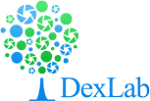The main idea behind SAS predictive is as simple as can be. All the relevant data/information is made available, and an analyst’s job is to only make predictions from the data with as much accuracy as possible. So, that useful business strategy can be developed from the predictions which will generate increased revenue for the business. To make sure your predictive model is accurate; going over the following questions can be helpful:
- What data can be used in the predictive model and how should it be utilized?
- What are the main variables that can be predicted?
- How the best accuracy can be determined?
- What are the available structures for using the model?
- How a predictive model can be used in the real world?
The main objective behind a predictive model is to use real data and predict trends in a business environment that will solve real problems and would be helpful in meeting the company’s objectives. But when it comes to real data, they are usually unclean so, the model is not always usable. And many-a-times the data violate some of the statistical theories. But despite all these challenges with predictive modeling using data, even a mediocre quality model can help solve very real problems of businesses.
One can use a SAS predictive model in various circumstances, but mostly they are best used when important strategic decisions are to be made.
While for those of you, receiving SAS predictive modeling training things might seem fairly easy for building a model with academic data for practice. But there is a huge difference in the usability of academic data and real data. Here is a story that will best illustrate how statistics work in corporate scenarios.
I have a friend who earned his PhD from a renowned university. Soon after completing his PhD degree he was meeting people from the business world (mostly other predictive modelers) who were already involved in using real industry-based data for building predictive models. But while he thought that having no experience with real data puts him at a disadvantageous position than those with experience. He discovered that they were using a procedure that was redundant. They were trying to solve problems using multiple observations on the same entity. But their consequent observations did not propose any useful solution that could be correlated with the problem at hand. He was the one who identified the problem quickly and pointed it out to the group. But they could not understand his reasoning behind the issue as they were mostly from computer science and physics backgrounds. Hence, were not very well adept to the statistical implications. But later on after he conducted some research on the issue he was able to understand that while their approach apparently seemed flawed, it wasn’t as bad as it had seemed initially. But what was more interesting to note about this issue was that was it the flaw in their statistical model that made the real distinction in the ROI of the product.
One can use a SAS predictive model in various circumstances, but mostly they are best used when important strategic decisions are to be made.
While for those of you, receiving SAS predictive modeling training things might seem fairly easy for building a model with academic data for practice. But there is a huge difference in the usability of academic data and real data. Here is a story that will best illustrate how statistics work in corporate scenarios.
I have a friend who earned his PhD from a renowned university. Soon after completing his PhD degree he was meeting people from the business world (mostly other predictive modelers) who were already involved in using real industry-based data for building predictive models. But while he thought that having no experience with real data puts him at a disadvantageous position than those with experience. He discovered that they were using a procedure that was redundant. They were trying to solve problems using multiple observations on the same entity. But their consequent observations did not propose any useful solution that could be correlated with the problem at hand. He was the one who identified the problem quickly and pointed it out to the group. But they could not understand his reasoning behind the issue as they were mostly from computer science and physics backgrounds. Hence, were not very well adept to the statistical implications. But later on after he conducted some research on the issue he was able to understand that while their approach apparently seemed flawed, it wasn’t as bad as it had seemed initially. But what was more interesting to note about this issue was that was it the flaw in their statistical model that made the real distinction in the ROI of the product.
Related posts :












Thanks for sharing this valuable post to my knowledge great pleasure to be here SAS has great scope in IT industry. It’s an application suite that can change, manage & retrieve data from the variety of origin & perform statistical analytic on it…
ReplyDeleteRegards,
sas training in Chennai|sas training institutes in Chennai